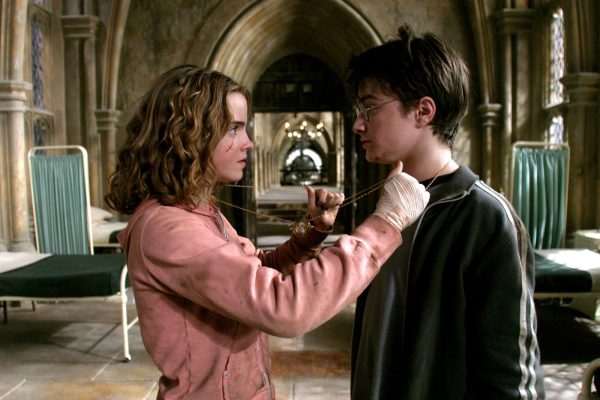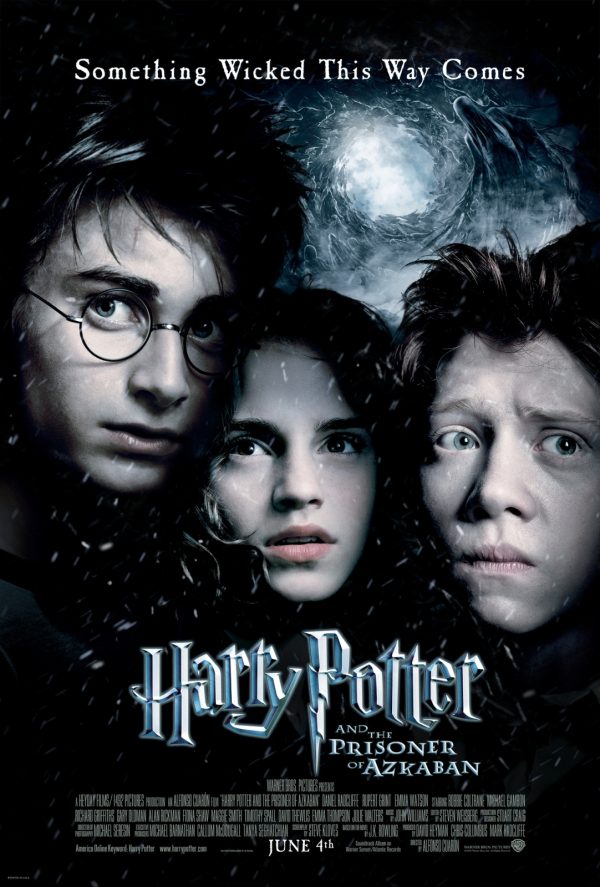Chris Connor revisits Harry Potter and the Prisoner of Azkaban as it turns 20…
The Harry Potter film series proved one of the most successful literary adaptations beginning with The Philosopher’s Stone in 2001. While Chris Columbus proved a strong pair of hands for the first two instalments, the third entry The Prisoner of Azkaban took the series to a new level under the direction of Alfonso Cuarón who would go on to win numerous accolades for subsequent films Gravity and Roma. The film celebrates its 20th anniversary and remains a high point, containing some of the most memorable performances and imagery of the series.
Cuarón, was initially hesitant to take on the film and it beggars belief how this film and the series may have panned out under another director. Cuarón has proven subsequently with the likes of Children of Men, how to balance distinctive visuals with immersive storytelling, think the car chase sequence in that film. In Prisoner of Azkaban there is a gothic almost horror like feel to much of it, yet retaining that sense of childlike innocence and wonder of the first two films, the stakes feel considerably higher, even in a more intimate story, we never see Voldemort here as in the source material.
The Dementors of Azkaban remain a haunting creation sucking the souls of their victims and terrifying audiences, Professor Lupin’s transformation to a werewolf also left a few traumatised over the years. Few of the later films have matched the tone of this film, finding a perfect balance between family-friendly and something more for adults or older children. It offers proof that a director can really stamp their mark within the constraints of franchise trappings, something Sam Raimi was also to achieve around the same time with his Spider-Man entries. It still very much feels within the franchise but is distinctly the work of an auteur.
The performances are what help elevate this film, with a first appearance from the late Michael Gambon, replacing Richard Harris. While we’ll never know how Harris would have fared with Dumbledore’s arc in the later films, Gambon remains an iconic presence in the role, delivering some of his best work here showing a darker more brooding side to the previously warm and lovable headmaster. David Thewlis as Harry’s Defence Against the Dark Arts teacher Lupin embodies his character with a warmth sense of heart and a tortured conflicted soul that few other characters in the franchise can reach.
Thewlis brings more out of Daniel Radcliffe than we had seen to this point, showing a camaraderie that would of course extend beyond simply teacher and pupil. Gary Oldman’s role may be smaller but no less important and having actors of this calibre really helps elevate the material, of course not something new for this franchise but this film in particular finds a sweet spot where many of the supporting players are at the top of their game even if just for a scene or two like Emma Thompson’s Professor Trelawney.
The Prisoner of Azkaban remains 20 years on, not just one of the strongest films in the Harry Potter/Wizarding World franchise but of blockbusters from that era as well with a real sense of visual spectacle and a darker tone that expands perfectly on what came before while laying the template for the conflict to come in later films. The more gothic tones and visuals perfectly showcase Alfonso Cuarón at his very best. It contains some of the best performances of the entire franchise both from its young cast and its accomplished supporting cast anchored by David Thewlis, Michael Gambon and Gary Oldman in particular. It remains as enthralling as it did on release and remains one of the finest sequels in recent memory.
What are your thoughts on Harry Potter and the Prisoner of Azkaban? Let us know on our socials @FlickeringMyth…
Chris Connor















